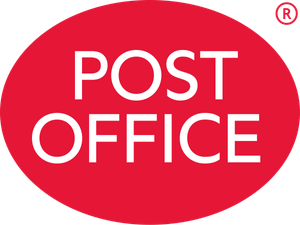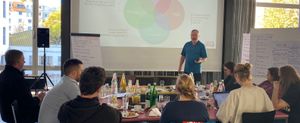How to write a great communications strategy - lessons we have learned so far
We help organisations develop communications strategies which meet their broader objectives. First we try to understand who they need to communicate with them. Then we establish exactly what they want to achieve. After that we develop a communications strategy for them, before turning it into a workable communications plan.
We take an audience-first approach to everything that we do. Our experience comes from running some of the UK's most successful behaviour-change campaigns. So, in practice, that means we ask a lot of questions before we start.
To simplify things dramatically, we start by asking ask who, what, how?
Who exactly are we trying to reach?
What do we want them to do, say, think, or feel differently as a result of this campaign?
How can we motivate people to do want we want?
What are the key messages we need to deliver?
What are the most efficient and effective ways to reach them?
How will we know when we have succeeded?
What are the best frameworks to help write effective communications strategies?
We recommend a bespoke communication strategy and project management framework for each client, but we often use the OASIS framework to help kickstart our documents.
O - Objectives
A - Audience insights
S - Strategy
I - Implementation
S - Scoring and evaluation
The OASIS framework is regularly used by the UK Government when they are developing their external communication plans.
How good is The PESO model for developing a communication strategy?
As well as using the OASIS campaign planning framework, we also recommend using the PESO (Paid Earned Shared and Owned) model, particularly when rolling out marketing communications plans for clients which involve developing film, copywriting or social content. Or when one of the most appropriate routes to reach people is through media relations and PR.
The PESO model is brilliant for helping you to identify which are the best communication channels to reach your target audience including advertising, on-site, email, PR, print and social.
By analysing your current situation against your communication objectives and then marrying that with budget available you can quickly work out what is the best way to reach people.
Our experience is undoubtedly in the ‘Earned’ and ‘Owned’ space – creating on-brand content to generate media coverage.
Pitching stories to journalists taught us how to create content which works for our clients and for the audience that our clients want to influence.
But we’ve also been running ‘Paid’ and ‘Shared’ campaigns for the last 10 years. For multinationals. And for friends’ SMEs.
Despite a few great years when social networks gave away ‘organic’ visibility for free, as shareholder-driven media owners, it’s now a pay-to-play world.
To get genuine visibility typically requires targeted advertising.
Over the last few years, pretty much every communications strategy that we right has included a hefty mix of 'Paid', in amongst other channels.
How to define your target audience?
Knowing who you are trying to communicate with is the first step to success.
We work with clients to create audience personas, which are pen-portraits based on as many facts as possible about who we are trying to reach. As we develop those personas we will include:
- Demographic information - things like age, gender, location etc.
- Professional information - their job role, seniority and career to date
- Communications touchpoints and preferred channels - what media and social media they consume, who influences them etc. etc.
But unlike other agencies we also look for emotional touchpoints as well.
- What problems can we help them overcome?
- How can we help improve their lives at work or at home?
Most organisations will have different groups of personas for different reasons. In our experience, once we have a good understanding of who we are trying to reach, we can really start work on how.
How long should a communications strategy be?
We have written a communication strategy for one client which is six paragraphs long. But for a major EU institution, the communication strategy we developed was more than 60 pages long.
The 'formal' communication strategy included tone of voice guidelines through to a revised approach to internal communications. But not every organisation needs a communication plan that is quite so detailed.
In our experience the easier is to read, the more chance that it will be implemented. We always like to simplify things where can. So there is no real 'ideal length.
But when it comes to developing a plan for effective strategic communications we always suggest using one of the models above and/or ensuring that all of these questions are asked. And then answered.
Essential questions to answer when writing the brief for a communications strategy
- What is your organisation's mission statement?
- What is the task we need to achieve with this activity?
- What are your communication goals to help achieve it?
- How does your strategic communication plan complement your marketing strategy?
- Who are you trying to reach?
- What do you want them to do?
- What budget do you have?
- How will we evaluate success?
How can a communications strategy help to change behaviour
We have worked in the UK and across the EU on award-winning behaviour-change programmes including for public health, transport, gender equality and anti-piracy.
There is no one-size fits all answer. But our hands-on practical experience, as well as plenty of evidence from behavioural economists, psychologists and strategists suggests two complementary routes to success.
- Frame what you want people to do in a way that they can see the benefits personally
- Make it as easy as possible for them to do what you want
We use techniques made famous in Nudge, as well as the Fogg behaviour model within many of the documents we write for our clients.
How can communication strategies generate sales or increase downloads?
If your objective is to drive sales or increase downloads, then your comms strategy should absolutely support that goal. In fact sales, traffic or download objectives are amongst the easiest to build a marketing communications plan for because they are some of the easiest results to evaluate.
As well as developing insights about your audience and the best channels to reach them, you strategy should also consider what makes your offer so special?
How important is defining a USP?
Why should your audience buy from you, or download it from your site? What is the 'unique selling proposition' or USP that you offer?
The clearer you are in your mind about what you have which your competitors don't, then the easier it is to build and implement a strategy around it.
Just as we do when defining the audience personas above, try to put yourself in the mind of who you are trying to reach. What is the problem that your offer can solve? How do you do it better than your competitors?
This single insight or USP can often be the peg on which your whole strategy hangs. And the clearer you are when you communicate it, the more sales you can expect to generate.
The importance of evaluation in a communication strategy
We always ask 'What does success look like?' before we start, because once we know that, we know how to tailor our strategy. If you ever write a document doesn't have a section on evaluation within it, then you need to start again. At best it's a series of tactics.
Define success before you start
We recommend being explicit about success metrics right at the start, and then making sure we have the right mix of evaluation tools to track performance.
For example, a product launch for brand X might be be considered a success if a large majority of our prospective buyers hear about it. This 'reach' metric is one that's relatively easy to measure on social media channels, and by PR coverage. It shows how many people were potentially exposed to your brand, and sometimes your key messaging.
But 'reach' alone doesn't mean much. If the overarching objective of the campaign was to encourage people to find out more about brand X, then reach is not the right metric. We might suggest using 'engagement' or 'traffic' instead.
And if, what we really wanted to generate was sales, then we should use different metrics entirely.
But the point is: the clearer that success is defined - whether it is a 'sales' metric, or an internal communications metric, then the easier it will be to build the right strategy to make that happen.
We work with our clients to develop SMART objectives wherever possible. We define these objectives and KPIs before we kick off a project. So we actually start by looking at where our clients want to finish.
Once you get into the habit of defining SMART objectives, you will insist upon them.
SMART objectives are:
- S - Specific. The more detailed the better.
- M - Measurable. Metrics must be objective
- A - Achievable. Do we have the skills and resources to do what we need
- R - Realistic. Based on the targets, the skills and resources...is the target actually achievable?
- T - Timely. All SMART objectives should have reporting timeframe and/or a deadline.
Of course, to know where we want to finish, and what we want to achieve, we also need to know exactly where we're starting from.
Benchmark at the beginning
As well as reviewing your evaluation metrics and KPIs at the start of any project, we also recommend carrying out a detailed comms audit first.
We recommend two analysis frameworks to help better understand the context that an organisation is operating in - PESTLE, and SWOT
PESTLE Analysis
PESTEL stands for Political, Economic, Social, Technological, Legal and Environmental. The analysis prompts you to ask simple questions like:
- Is there an election soon?
- Might a new Government impact how we operate?
- How is the economy performing and what might we need to different?
- Are social norms changing, and do we need to be ahead of the curve?
- Is there new technology that we should be wary of - or embrace?
- How are environmental regulations changing, and how might those changes impact what we do?
- Should we change faster than we need to?
All of those sorts of questions have significant implications when it comes to comms. The external environment sets the framework that any strategy needs to follow.
SWOT Analysis
A SWOT analysis is useful in many situations, especially when trying to benchmark where you are now.
- What are our strengths?
- What are our weaknesses?
- What are our opportunities?
- What are our threats?
This sort of quadrant analysis can be applied both externally and internally. The SWOT framework is particularly good at helping teams to work together and agree a starting point.
Competitor analysis
As well as looking at your own organisation, we would always recommend looking at what your competitors or peers are doing. Sometimes we would do a full content audit, but other times we might use a mix of free and paid for tools including Brandwatch, Google Alerts, Similarweb, and SEO tools like Semrush or Moz to track the current state of play.
At the very least we would suggest spending a few hours looking through their website to try and work out what they are trying to achieve from their comms.






